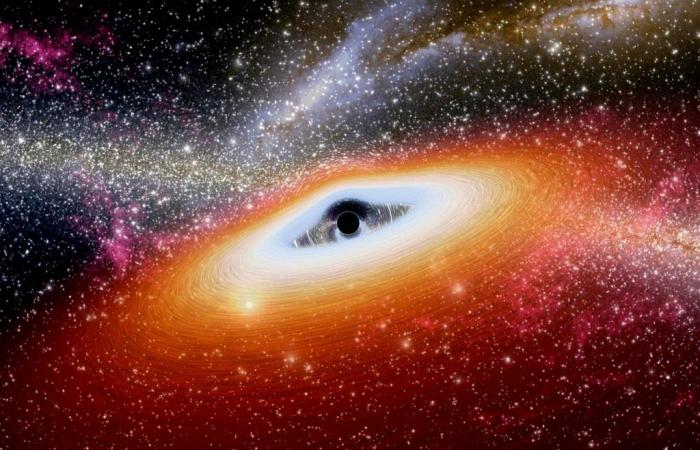This black hole already weighed more than a billion solar masses in the early universe, despite being so young.
Thanks to its sophisticated tools, the James Webb Space Telescope it immortalized a galaxy as it was just 700 million years after the Big Bang. It’s baffling how the black hole at its center could already weigh a billion solar masses when the universe was still in its infancy. Apparently, black holes were already growing similarly to today. But the result is even stranger: It may prove that astronomers know less than they thought about how galaxies form. And yet the measurements are not at all disappointing. In reverse.
Giant black holes in the early universe
The first billion years of cosmic history are challenging: the first known black holes at the centers of galaxies have surprisingly large masses. How did they become so massive so quickly? The observations were made in January 2023, during the first observation run of JWST, and lasted about two and a half hours. They are the first mid-infrared study of a quasar at the time of cosmic dawn, just 770 million years after the Big Bang. The information comes not from an image, but from a spectrum: the rainbow-like breakdown of the object’s light into components of different wavelengths.
The mystery deepens
The problem is that J1120+0641 (this is the name given to the black hole) is no different from the quasars of subsequent eras. “Overall, the new observations only add to the mystery: the first quasars were surprisingly normal. No matter in which wavelength we observe them, quasars are almost identical in all epochs of the Universe,” say the authors of the study. Not only the supermassive black holes themselves, but also their power mechanisms were apparently already fully “mature” when the Universe was only 5% of its current age.
How the first black holes formed
Ruling out a number of alternative solutions, the results strongly support the idea that supermassive black holes have had considerable masses from the beginning, in astronomical jargon: that they are “primordial” or “seeded large.” Supermassive black holes did not form from the remnants of the first stars, but they became massive very quickly. They must have formed early with initial masses of at least one hundred thousand solar masses, presumably through the collapse of gigantic nebulae.
Source



